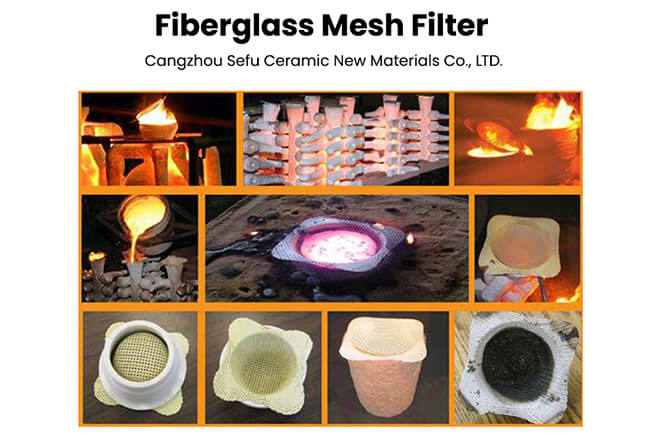In sand casting, impurities like slag, oxides, and sand particles can cause defects in final castings. High-temperature fiberglass mesh filters offer an effective solution to this problem. This guide explains how to correctly use these filters to enhance metal quality and yield.
What Are High-Temperature Fiberglass Mesh Filters?
These filters are woven from high-temperature-resistant fiberglass threads. They are designed to withstand molten metal temperatures (typically up to 1400°C), making them suitable for aluminum, copper, bronze, and iron castings.
Key Benefits
-
Remove Impurities: Capture slag, dross, and foreign particles.
-
Control Metal Flow: Change turbulent flow into smooth laminar flow, reducing sand erosion.
-
Improve Yield: Lower rejection rates due to inclusions and sand-related defects.
-
Simplify Gating: Allow for more efficient gating system designs.
Where to Place the Filter in Sand Casting
Proper placement is critical. Install the filter before the metal enters the mold cavity.
Common locations:
- In the Runner Bar – The most common and practical location.
- At the In-Gate – Provides maximum protection but requires more filters.
- At the Base of the Sprue – Helps reduce initial turbulence.
Step-by-Step Installation
-
Design a Filter Slot: During molding, create a shallow slot in the runner or gate. The slot should be slightly smaller than the filter to ensure a tight fit.
-
Insert Before Closing: Place the filter into the slot just before closing the mold. Do not bake the mold after inserting the filter.
-
Press Firmly: Push the filter flush with the sand surface. Ensure it is secure and there are no gaps around the edges.
-
Close and Pour: Assemble the mold and pour as usual. The metal will flow through the filter, leaving impurities behind.
Important Considerations
- Choose the Right Grade: Select a mesh size suitable for your metal and application.
- Avoid Thermal Shock: Do not expose the filter to open flame or high heat before pouring.
- Ensure Proper Sizing: The filter must provide sufficient flow area to avoid slow pouring.
- Handling: Fiberglass filters are brittle. Handle carefully to avoid breakage.
Why Use Mesh Filters in Sand Casting?
Using mesh filters is a low-cost method to significantly improve casting quality. They reduce cleaning and machining time and increase overall productivity and part reliability.
Conclusion
High-temperature fiberglass mesh filters are a simple and highly effective way to reduce defects in sand castings. By installing them correctly in the gating system, foundries can achieve cleaner, higher-quality castings with less waste.


